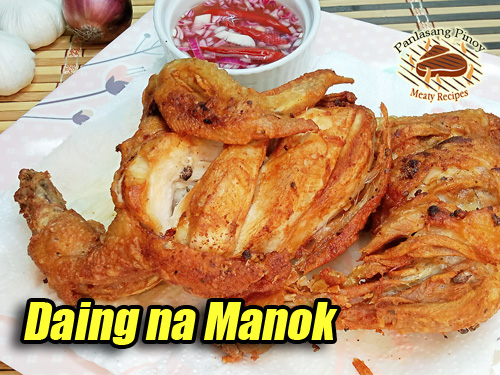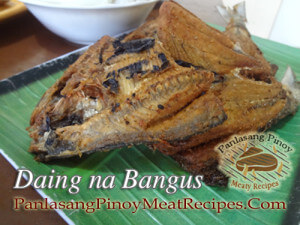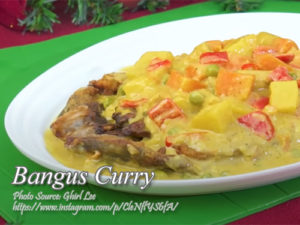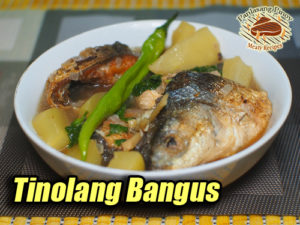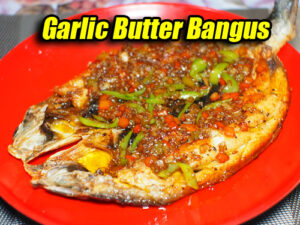This chicken recipe is a counterpart of the popular daing na bangus. But instead of using milkfish, chicken is substituted on making this daing na manok. I think this is an old recipe way back in the Pre-Hispanic period where the early Filipinos preserve their meats using salt, vinegar and spices.
That is why this chicken is more salty than the ordinary fried chicken. But you will be surprised how tasty it is even it is very simple to prepare and to cook. Basically you only need 5 ingredients in making this: chicken, vinegar, garlic, salt, and black peppercorns.
Daing na Manok: A Surprising Twist on a Classic Favorite
I didn’t grow up eating daing na manok. Like most families in the province, we usually had daing na bangus on the table—crispy skin, sour-salty bite, dipped in spiced vinegar and paired with sinangag. It wasn’t until one rainy afternoon in Nueva Ecija that I stumbled across the chicken version, thanks to my Uncle Ruben’s curious kitchen experiment.
That day, his usual delivery of bangus didn’t arrive. He had chicken, though—fresh from the backyard—and decided to prepare it the same way our Lola Nena used to make fish daing. We all thought he was joking at first, but once that marinated chicken hit the frying pan, the aroma was undeniably delicious. And just like that, a new family favorite was born.
What is Daing na Manok?
This humble dish is basically vinegar-marinated chicken that’s fried until golden and crisp. It’s the poultry version of the more well-known daing na bangus, but don’t let the simplicity fool you—it packs a ton of flavor. The meat is briny, tangy, and garlicky with a subtle peppery kick, thanks to a short soak in a basic marinade of suka, bawang, asin, and paminta.
In fact, some say this method of marinating in vinegar and salt dates back to pre-Hispanic times. It was an old preservation technique used by early Filipinos, especially in areas without refrigeration. That explains why the flavor is on the saltier side—it was designed to make the meat last longer in tropical heat. So if you’re into dishes with history and character, this one has plenty to offer.
Ingredients You Probably Already Have
What I love most about this recipe is how basic the ingredients are. You only need five things: chicken, vinegar, garlic, salt, and black peppercorns. No fancy seasonings. No need for hours in the kitchen. Just honest, home-cooked goodness.
My cousin Jessa, who now lives in Ilocos, swears by using sukang Iloko for the marinade. It has a deeper, earthier taste compared to regular white vinegar, and it makes the final dish even more flavorful. I’ve tried it myself, and I have to agree—if you can find it, give it a go.
How to Make Daing na Manok at Home
The preparation is straightforward and beginner-friendly. First, choose your chicken cuts. Thighs and legs work best because they stay juicy, but you can use any part you like—even a whole bird cut into quarters.
Make shallow slits on the skin and meat. This allows the marinade to seep deep into the chicken, giving it that well-rounded, seasoned taste with every bite. Then in a big bowl or palanggana (basin), mix the vinegar, garlic, peppercorns, and salt until the crystals dissolve. Massage this mixture into the chicken pieces and let it sit for at least one hour. If you’re like my Ate Marivic who loves bold flavors, marinate it overnight—but make sure to discard the marinade before storing in the fridge. Leaving it too long can make it too sour.
When it’s time to fry, heat about three cups of oil in a kawali and deep-fry the chicken until golden brown and crisp at the edges. The scent alone will bring your neighbors knocking. My brother once came running from the next house because he thought we were making adobo. Nope—just daing-style chicken doing its magic in hot oil.
Best Served with Rice and Spiced Vinegar
This dish isn’t complete without a side of sinangag and a small bowl of spiced vinegar. Some like to add sili or chopped red onions to their suka for a little heat. Either way, the acidity cuts through the richness of the fried chicken and makes each bite extra satisfying.
We usually serve this for lunch, especially on weekends when everyone’s home. It’s one of those meals that feels familiar even the first time you try it—probably because it taps into something old, something Filipino, something deeply comforting.
A Dish with a Story
Every family has their version of comfort food, and this recipe is now part of ours. What started as an experiment from Uncle Ruben became a staple at birthdays, reunions, and even those lazy afternoons when you just want something tasty with minimal effort. It reminds me that in Filipino cooking, innovation often comes from necessity—and some of the best dishes are born from “what we have right now.”
So the next time you’re craving something crispy, flavorful, and proudly Pinoy, give this chicken daing a try. You might just start your own kitchen tradition, too.
How to Cook Daing na Manok
Ingredients
- 1 whole chicken. cut into quarters 4 pcs
- 1 cup vinegar
- 1 head garlic minced
- 2 tsp. cracked black peppercorns
- 2 to 3 Tbsp. rock salt or sea salt
For the spiced vinegar dipping sauce:
- 1/2 cup vinegar
- 1 pc onion minced
- 3 cloves garlic crushed
- 1 tsp. cracked black peppercorns
Instructions
How to Cook Daing na Manok
- Cut the whole chicken in 4 pcs. You can also use the choice parts of the chicken like the thigh, legs or wings. Cut some slits on the chicken skin and meat.
- In a large bowl or basin, combine vinegar, garlic, black peppercorns and salt. Mix until the salt is dissolved.
- Add in the chicken and rub the vinegar mixture on the chicken then arrange the chicken in the basin to fit them and well soaked with the marinade.
- Marinate the chicken for 1 to 3 hours. If you want to keep it in the fridge or overnight, discard the marinade so it will not become too salty and too sour.
- Heat cooking oil in wok or pan, about 3 cups. Fry the chicken for 15 minutes or until golden brown.
- Serve with spiced vinegar as dipping sauce. Enjoy!
Video
Notes
Cooking Tips:
Choose the Right Cut of Chicken
Thighs and drumsticks are ideal for this recipe because they stay juicy and flavorful even after deep frying. Avoid using lean cuts like breast, which can dry out easily in hot oil. If you’re using a whole chicken, make sure the pieces are cut evenly so they cook at the same rate.Don’t Over-Marinate the Chicken
While it’s tempting to let the chicken soak overnight, too much time in vinegar can break down the meat’s texture and make it mushy or overly sour. One to three hours is enough to infuse the flavor without overpowering it. If marinating overnight, discard the liquid to prevent the chicken from becoming too salty.Let the Chicken Rest Before Frying
Take the chicken out of the fridge about 20 minutes before cooking to let it come to room temperature. This ensures more even frying and helps prevent the oil temperature from dropping too low. Cold chicken straight from the fridge can cause splattering and uneven browning.
